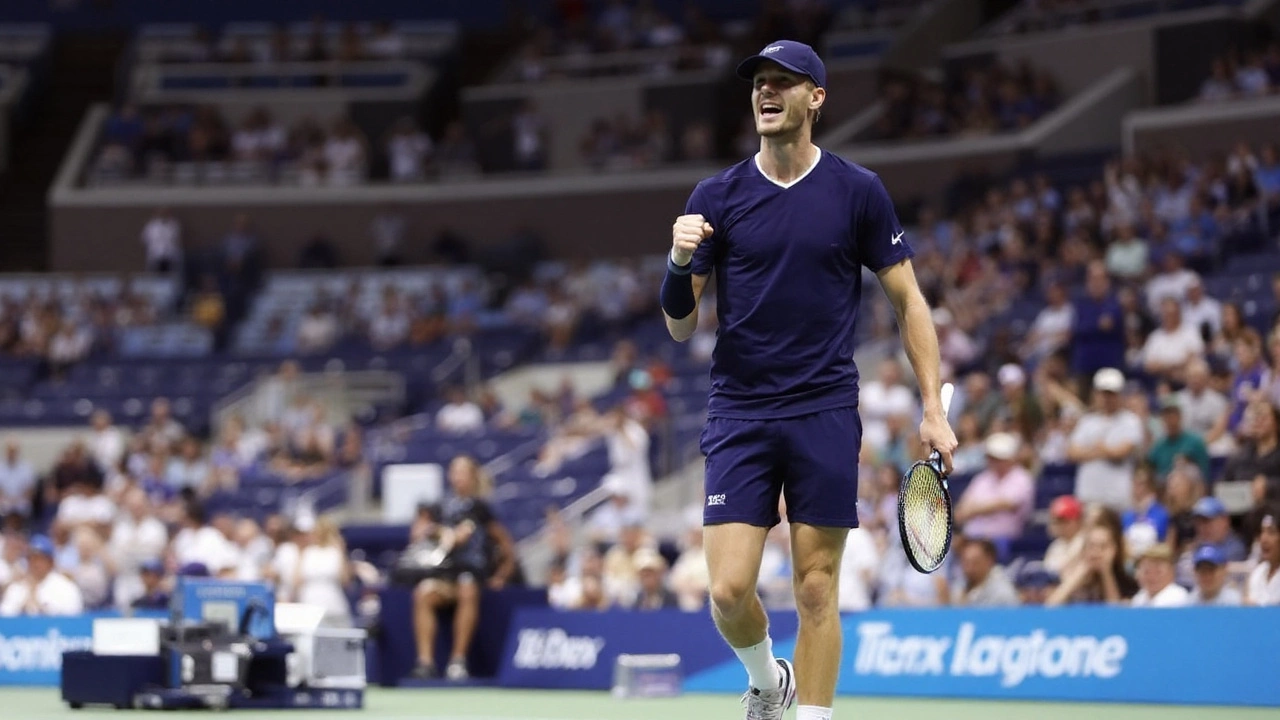
Twenty-six wins and counting: Sinner rolls past Musetti into the final four
Jannik Sinner didn’t just win. He squeezed all the air out of a tricky quarterfinal and sent a clear message to the field. The defending champion and world No. 1 beat countryman Lorenzo Musetti in straight sets to reach the US Open semifinals, pushing his unbeaten run at hard-court majors to 26 matches. He’s now two wins from a repeat in New York and still in control of the ranking conversation—at least for now.
The first set had some static. Musetti’s variety put sand in the gears early—heavy topspin, low skidding slices, and sudden pace changes. Sinner needed a few games to solve the mix. Once he did, the match flipped. In the second set he landed over 80% of his first serves, took time away on return, and started leaning into baseline rallies with that clean, compact backhand. Musetti was broken four times across the final two sets, and the closer was a tidy 6-2 that felt inevitable once Sinner found his timing.
This was a clash of styles that looked good on paper. Musetti tried to pull Sinner off his strike zone—looping forehands high to the backhand, slicing short to draw him in, then punching flat through open space. The problem? Sinner’s depth. Ball after ball landed heavy inside the baseline, shrinking Musetti’s options. When Musetti floated a neutral ball, Sinner stepped in and drove it early, robbing him of recovery time. The Italian No. 1 also guarded the corners well; he rarely gave up the first strike and refused to donate errors under scoreboard pressure.
Sinner’s serve was the quiet star. Not just the raw speed, but the choices. Wide to the ad side to set up the backhand, body serves to jam the one-hander, and enough down-the-Ts to keep Musetti guessing. That second set—when his first-serve rate popped above 80%—changed the rhythm of the day. His holds got quick. Musetti had to play risky on return, and that bled into his baseline game, where the margins were already thin.
The longer story is Sinner’s hard-court major streak. Twenty-six straight across the sport’s two biggest hard-court events is rare air. It’s about more than shotmaking. It’s scheduling, recovery, and the ability to lift in key moments. He’s not muscling his way through these runs; he’s managing them—taking pace off when a rally asks for it, using height to buy time, and trusting patterns that hold up under heat.
Musetti, for his part, didn’t back off. He showed the craft that makes him dangerous on a good day—soft hands, disguised changes of spin, and that elegant one-handed backhand that can straighten rallies in an instant. But to keep Sinner off balance for three sets, you need a high first-serve clip and a steady flow of short balls to attack. He couldn’t find enough of either once Sinner tightened his length and cleaned up his return positions.

What’s next: Auger-Aliassime’s resurgence, the No. 1 race, and the New York stage
Next up is Felix Auger-Aliassime, back in the deep end of a Slam for the first time since 2021 and riding a genuine resurgence. He’s stacked three upset wins this fortnight, and you can see the old confidence returning—looser shoulders, a livelier forehand, and a first serve that buys him short replies. This version of Auger-Aliassime plays on the front foot and commits to taking the ball early. That makes him dangerous against anyone, including the top seed.
Matchup-wise, their semifinal tilts toward first-strike tennis. If Auger-Aliassime’s serve sets the tone and his forehand holds up over long exchanges, he can drag Sinner into more reactive positions. If Sinner keeps the return tight to the baseline and pins the Canadian’s backhand in the ad corner, he’ll control neutral and get the forehand he wants on his terms. The margins here will live on small choices—second-serve aggression, line changes at 30-all, and who wins the first two or three long rallies of each set.
Three things to watch in the semifinal:
- Serve percentage and location: Sinner’s wide serve to the ad court vs. Auger-Aliassime’s T serves on big points.
- Backhand crosscourt: Can Sinner squeeze errors from the Canadian’s two-hander, or does Auger-Aliassime break pattern and change down the line early?
- Transition choices: Both can finish at net when ahead in the rally. Whoever takes the short ball first will own the tempo.
The ranking angle adds extra charge. Sinner has been No. 1 for 66 straight weeks, and that status isn’t locked for eternity. Carlos Alcaraz is alive on the other side of the draw with Novak Djokovic as the obstacle. Depending on how the weekend breaks, Alcaraz could put pressure on the top spot. That’s the reality of a tight race—every round carries weight, even when the tennis looks effortless.
Then there’s the setting. The US Open is the sport’s last Grand Slam of the year and, this year, its 145th staging. New York crowds reward bold play and quick decisions. Sinner fits the mold. He doesn’t stall. He takes the ball on the rise, turns defense into offense with one step inside the court, and makes opponents feel like the baseline is a wall creeping forward. That plays here, where the noise is constant and nerves are tested in every service game.
It’s easy to forget he’s defending the title he won last year, when he lifted his first US Open trophy on the same weekend Aryna Sabalenka won the women’s crown. Defending in New York is hard—there’s no place to hide, and the draw gives you different puzzles every other day. He’s handled each one so far with a similar blueprint: start compact, read the first set, and then turn the screws in sets two and three.
For Musetti, this wasn’t the result he wanted, but it showed pieces he can build on. The variety worked in patches, his backhand held shape against one of the heaviest balls on tour, and he proved again that he can make elite baseliners uncomfortable. Sharpen the serve, get a few more free points, and these matchups look different.
For Sinner, the mission stays simple: keep the engine humming. The semifinal asks new questions—different pace, different look, and a player who likes to take control early. Answer those, and the path to Sunday opens wide.